10 LMS companies
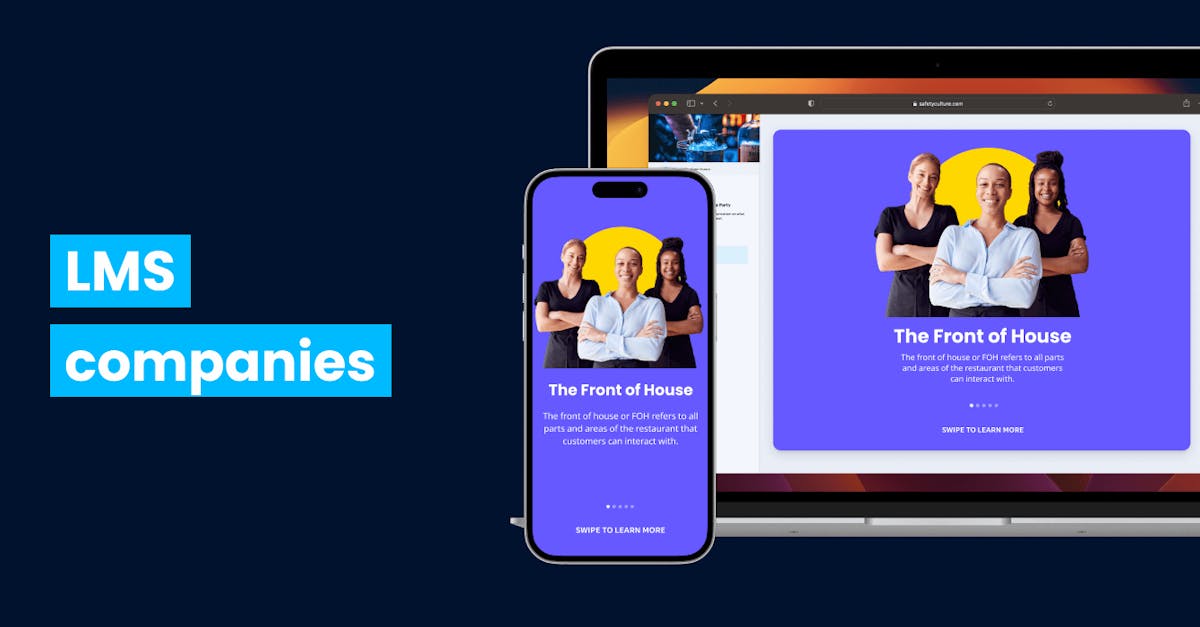
Workplace training has come a long way. Thanks to technology, more companies are now embracing modern solutions for their training needs. So if you want to bring an effortless learning culture to your workforce, here's a list of LMS companies you can consider collaborating with.
1. EdApp
EdApp is a mobile-first LMS company with a mission to change how the world learns at work. It boasts a suite of features that solidifies its position as an award-winning, top learning management system.
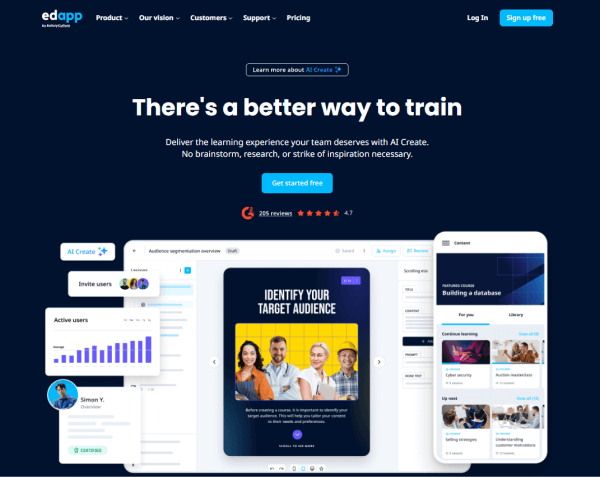
EdApp features a microlearning approach ideal for businesses, NGOs, and community organizations everywhere. It's a company training method that distills the core information of a topic into short, easy-to-digest mini-lessons. It's far more effective at increasing focus and knowledge retention, improving employee engagement, and reducing time for content consumption.
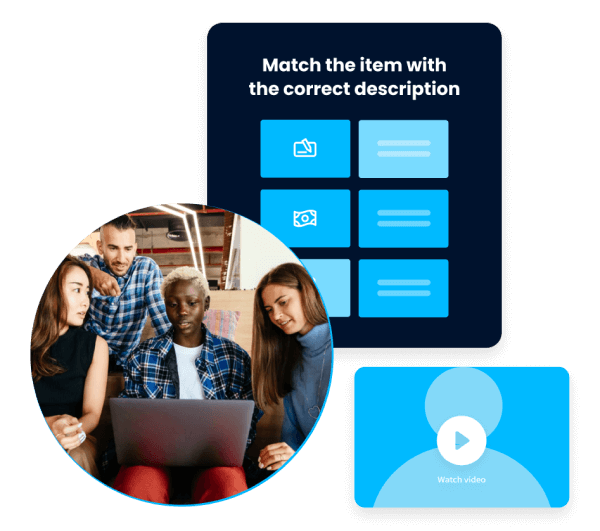
You can find over 1,000 ready-to-use mini-lessons at EdApp's highly customizable Course Library. But if you want to do them yourself, you can opt for their Creator Tool. They have at least 80 templates for applying videos, quizzes, games, assessments, and more. You'll be able to make your training content more interesting, even without any coding or graphic design experience.

If you'd rather not build lessons from scratch, EdApp offers Course Creation Services where you can work with their instructional designers for expertly-designed courses. You can also try out their newest AI Create feature to generate top-notch lessons with just one click. You'll get to save up to 2 hours when creating courses, giving you more room to perform other important tasks.
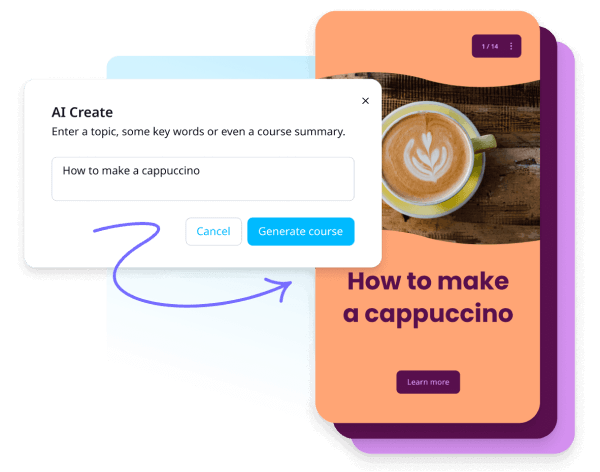
EdApp's packed with useful features that can help increase knowledge retention and employee engagement. These include built-in gamification, interactive discussions, practical assessments, and adaptive and social learning features. You'll also have access to detailed LMS reports and analytics to monitor your team's progress and develop solutions for any training discrepancies.
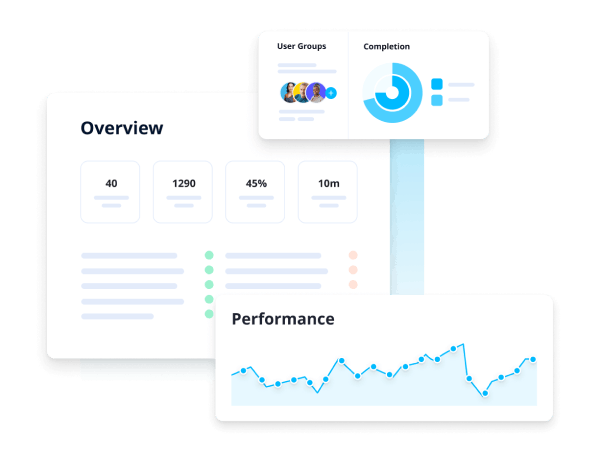
All these are now possible thanks to EdApp’s learning management system. The best thing? It's free for teams of any size. You can upgrade anytime, only when you need to.
Cost: Free
Products & Key Features:
- Microlearning
- Course Library
- Creator tool
- Course creation services
- AI Create
- Gamification
- PowerPoint converter
- SCORM
- Interactive discussions
- Practical assessments
- Social learning
- Reporting and analytics
Collaborate with the top LMS company today! Sign up with EdApp at no cost.
2. LearnWorlds
LearnWorlds is an LMS company with a user-friendly interface that lets you quickly design and deliver interactive lessons, quizzes, and assessments. You can use their drag-and-drop course builder to customize attractive themes and develop free, paid, private, drip-fed, or curated lessons.
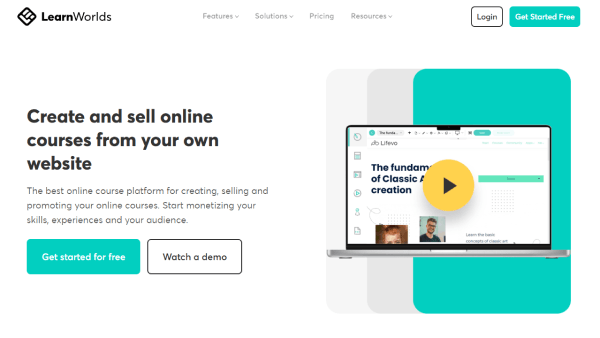
LearnWorlds offers interactive videos, ebooks, one-on-one and group sessions, certificates, SCORMs, surveys, and more. They even have a social network page that can help strengthen your community by allowing members to connect and join in discussions.
You can also use this LMS to make money from your skills, experiences, and audience by creating resources. They have marketing tools like landing pages and email campaigns to help you promote and sell your courses.
Cost: Free (within a 30-day trial); Paid plans start at 49 USD monthly per user
Products & Key Features:
- Drag-and-drop block-based builder
- Interactive video
- Assessment and survey builder
- Social networks page
- Marketing tool
3. 360learning
With 360learning, you can foster a culture of collaborative learning and upskilling at work. It's a great platform for employee onboarding and compliance, frontline staff, and customer training.

You can use 360learning's LMS to create and deliver top-notch courses and incorporate learning resources such as videos, images, blog articles, and research. You'll also have access to collaborative learning features like discussion boards and group pages, which can encourage active meeting participation.
They also have an AI-powered 'Recommended for you' section, automatically suggesting courses and programs tailored to each learner's needs based on previous training.
Cost: Paid plans start at 8 USD monthly per user
Products & Key Features:
- Authoring tool
- Collaborative learning
- AI-powered recommendations
- Analytics and reporting
4. Blackboard
Although geared primarily for formal classroom education, Blackboard is an all-purpose LMS software that can be extensively used for corporate learning and development. It's especially well-suited if you're looking to train employees in sales, associations, healthcare, financial services, and extended enterprise.
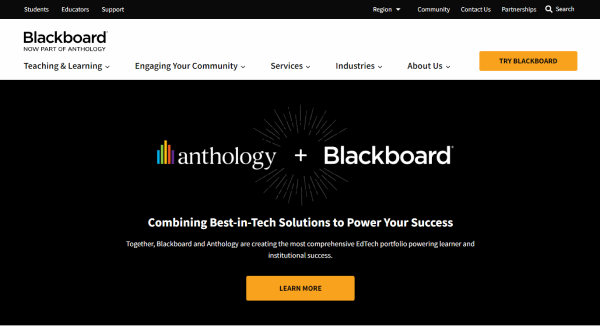
Using Blackboard, you'll have complete control over your training programs. You can customize lessons, arrange tasks, or add valuable features like an email system, documents, discussion boards, live chat, and websites. Certifications are available once your learners complete their courses.
Like most online learning platforms, Blackboard has an analytics tool that allows learner progress tracking. You can also use its mass notifications feature to consistently update learners on relevant information.
Cost: Available upon request
Products & Key Features:
- Website design and content management
- Web conferencing and collaboration
- Registration and reporting
- Mass notifications
- Certificates
5. Bridge
Bridge has a user-friendly LMS platform with course authoring tools, automated learning pathways, flexible integrations, and push notifications to support your learning and development efforts.
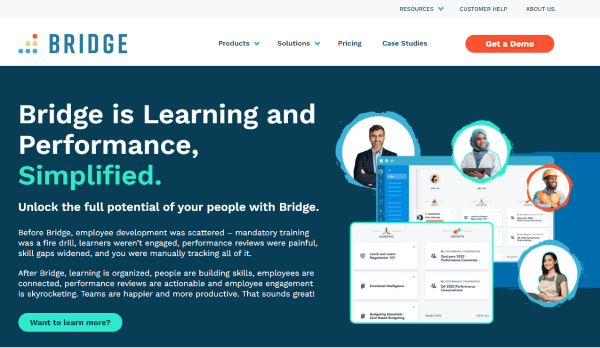
With Bridge, you can access integrated performance management tools to simplify the performance review process, share one-on-one and group agendas, conduct talent reviews, set goals, align teams, and even provide peer skills feedback.
Aside from skill-building, you can use this online learning platform for compliance training delivery, customer training, and onboarding of new employees.
Cost: Paid plans start at 4 USD monthly per user
Products & Key Features:
- Course authoring tools
- Automated learning pathways
- Flexible integrations
- Push notifications
6. Litmos
Next on the list is Litmos, a cloud-based LMS company that gives solutions for customer, partner, and employee training. They have ready-to-access courses and dynamic lessons to deliver to your team in minutes.
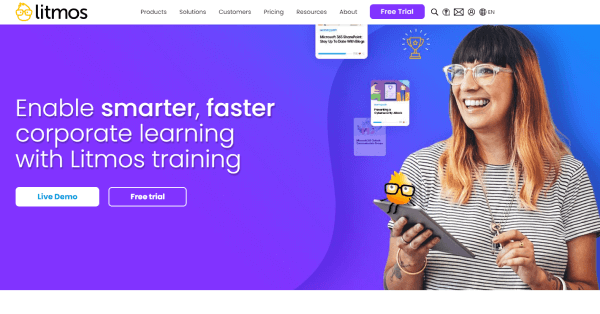
You can implement achievements, points, badges, and leaderboards to improve learner motivation. Or use its video assessments feature to have your learners record and upload their videos for tasks like giving elevator pitches or product overviews.
Litmos will also let you integrate popular business tools like Shopify if you want to sell your courses through pre-packaged features or set up an online storefront for your business.
Cost: Available upon request
Products & Key Features:
- Content Authoring
- Gamification
- Video Assessments
- Tracking and reporting
- E-commerce
7. Coassemble
Coassemble is another impressive LMS company with an all-in-one platform that will let you set your ideal training structure and deliver a personalized experience.
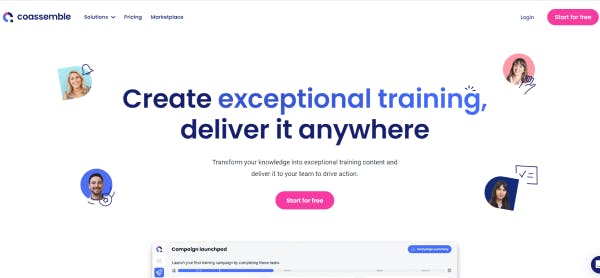
You can take advantage of Coassemble's smart interface for building training campaigns with ease. You can use their intuitive drag-and-drop functionality, adjust content screen sizes, customize colors, and apply global branding to your courses.
It's an excellent tool if you'd like to focus on various training areas like policies and procedures, product training, onboarding, and team training. Their screen templates will engage learners with interactive elements to make information retainable and learning enjoyable.
The best thing is that they're committed to outstanding customer support, so you'll have no worries with your training process.
Cost: Paid plans start at 50 USD monthly per user
Products & Key Features:
- Prebuilt course templates
- Lesson screens
- Free consultation
- Integrations
8. eduMe
At eduMe, you can find training materials focused on onboarding, productivity, safety, and compliance, specifically designed for frontline workers. You can go through these contents with just one tap on their mobile app.
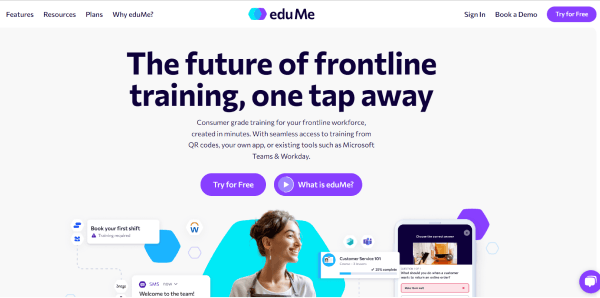
It’s unlike the usual one-way training process where employers are the only ones who can deliver courses. With eduMe, your employees can use content creation tools to easily import videos, images, and quizzes into their own lessons. It’s a great way of inspiring them to contribute their best practices and knowledge with the rest of the team.
Compared to the other learning management system examples, eduMe offers a unique Tiktok for Training format. You can leverage this to implement engaging, visual microlearning experiences for an easier, social media-based consumption of workforce training.
Cost: Available upon request
Products & Key Features:
- Intuitive content builder
- Microlearning
- Social media-based training
9. GoSkills
GoSkills is a user-friendly and flexible LMS company primarily designed to cater to small-scale businesses.
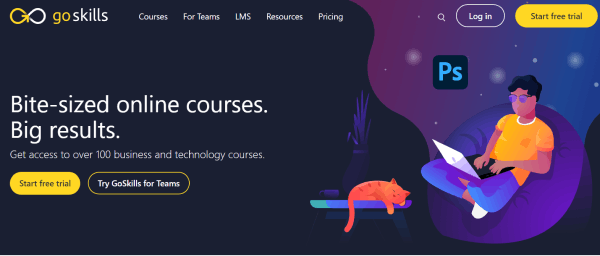
Their comprehensive training solution takes pride in its microlearning feature with bite-sized lessons to cover one thought at a time. You'll have over 100 free business and technology mini-lessons at your disposal, but you can also upgrade for additional features.
Thanks to GoSkills' responsive authoring tool, it's easy to import or create courses where you can add a personal touch by customizing your branding. You can also make learning more enjoyable with built-in gamification and keep your learners on track through progress checks, feedback options, and basic statistics. As a bonus, they'll get verified certificates of achievement for each course they complete.
Cost: Free (within a 7-day trial); Paid plans start at 29 USD monthly per user
Products & Key Features:
- Microlearning
- Authoring tool
- Gamification
- Course tracking
10. ProProfs
ProProfs' intuitive SaaS LMS has a vast collection of templates and media content. With their premium library of more than 100 pre-made lessons, you can effortlessly upskill your teams in industries like construction, healthcare, and finance.
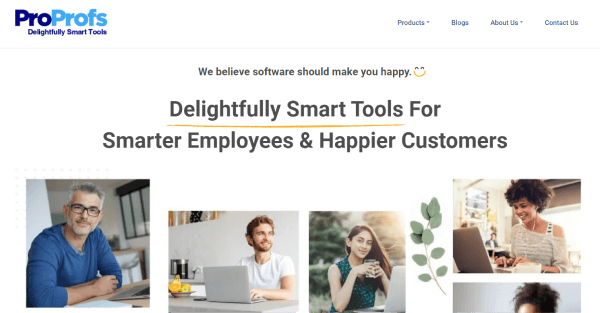
What's more, ProProfs takes engagement to the next level by incorporating gamification elements like brain games, learning paths, and quizzes. You can also customize interactive quizzes and assessments with various question types like multiple choice, true or false, and open-ended questions.
This online learning platform promotes a collaborative learning environment with features like discussion forums and virtual classrooms. Plus, they offer flexible learning so your learners will have control over what, when, and how they want to learn.
Cost: Free (within a 15-day trial); Paid plans start at 79 USD monthly per user
Products & Key Features:
- Editable course library
- Gamification
- Quizzes and tests
- Collaborative features
- Reports and analytics
Ready to unlock the full potential of your workforce? Check out these LMS-related articles to get you started.
- Learning Management System – LMS gives an in-depth discussion on everything you should know about LMS.
- 10 Types of LMS will help you decide which LMS type best fits your organization's needs.
- 10 LMS Features tackles useful functionalities you should consider for your training.
- 10 Tips for LMS Administrators will walk you through the best training solutions and techniques.
Author
Ella Mar
Ella is a content writer for EdApp, an award-winning e-learning management system designed to help companies deliver high-quality workplace training. In her free time, she enjoys painting, reading, or playing with her cat.
